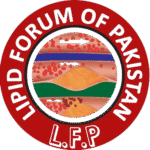History
Who Are We?
Lipid Forum of Pakistan idea was brought up by Prof. Abdul Rasheed Khan and his associates in 2025, and officially launched on 10th May 2025 on the occasion of World lipid Day. The Founding Council members included Prof. Feroz Memon, Prof Nawaz Lashari, Prof Jamil Ahmed, Prof Yousuf Kamal, Prof Qaiser Jamal, Prof Raj Kumar, Prof Ghulam Hussain, Prof Abdul Malik, Dr Sabeen Arif, Dr Shirjeel Hussain. The Founding member group met on 1st May 2025, to make preparations for launching of forum on 10th May 2025 on “World Lipid Day”, and to draft the statutes.
A steering committee meeting comprising of leading experts in their respective fields met to draft the statutes. The forum was officially launched at Hotel Pearl Continental Karachi.
The Founder members elected Prof. Abdul Rasheed Khan as the President and Prof. Mohammad Nawaz Lashari as General Secretary. The other office bearers were as below:
Prof Feroz Memon as Chairman, Prof M Jamil Ahmed as Senior Vice President, Prof Qaiser Jamal as Joint Secretary while Prof Kamal Yousuf as Chairman Academics, Dr Shirjeel as Karachi 1st Coordinator and Dr Sabeen Arif Karachi 2nd Coordinator, Dr Zaman Baloch Hyderabad Coordinator, Prof Ghulam Hussain Baloch as Chairman of Research & Development and Prof Abdul Malik as Co-Chairman and Dr Javeria, Dr Rabeel, Dr Fazal ur Rahman, Dr Adnan Bawani as its members. Prof Raj Kumar was Selected as Treasure. Prof M Ishaq as Chair Person Of Coordinators Of Pakistan.
The Lipid Forum of Pakistan (LFO) comprises distinguished doctors of Cardiovascular Medicine, Internal Medicine, other deciplines, Pharmacologists, and aspiring young doctors with an interest in lipidology.
Lipid Forum Of Pakistan
Dyslipidemia is highly prevalent in Pakistan, with studies indicating a range of 79.3% to 98.1% in the population. A study focusing on hyperglycemic patients found a 95% prevalence of dyslipidemia. Another study in Karachi found a 75.9% prevalence in young adults.
The prevalence of dyslipidemia was 29.10%, with high TG (15.86%) being the most common component, followed by low HDL-C (14.68%), high TC (6.43%) and high LDL-C (5.37%).
The prevalence of dyslipidemia in Pakistan is high, with studies reporting rates ranging from 55.2% to 98.1%. A study in Lahore found a 79.3% prevalence. Dyslipidemia, which includes elevated cholesterol, triglycerides, and LDL, as well as low HDL, is a significant risk factor for cardiovascular disease.
Several studies indicate a widespread presence of dyslipidemia in the Pakistani population.
Varied prevalence rates:
Studies have reported different prevalence rates, potentially due to variations in study populations and methodologies.
Mixed dyslipidemia:
Many studies highlight the prevalence of combined dyslipidemia, where multiple lipid abnormalities are present.
Gender differences:
Some studies suggest that females may be more affected by certain aspects of dyslipidemia, such as low HDL levels, compared to males.
Risk factors:
Factors such as high BMI, age, waist circumference, hypertension, lack of physical activity, and tobacco use are linked to an increased risk of dyslipidemia.
Urban vs. rural:
Some studies suggest differences in prevalence between urban and rural populations.
Diabetes and dyslipidemia:
There’s a strong association between diabetes and dyslipidemia, with studies showing a high prevalence of dyslipidemia in diabetic patients.
Public health implications:
The high prevalence of dyslipidemia in Pakistan highlights the need for public health interventions to address this important cardiovascular risk factor.
Key findings and factors
High prevalence: Studies consistently report high rates of dyslipidaemia in Pakistan.
Mixed dyslipidaemia: A significant portion of individuals with dyslipidaemia exhibit a combination of lipid abnormalities.
Urban vs. rural: Dyslipidaemia is more common in urban areas compared to rural areas.
Age and gender: Dyslipidaemia can be observed in individuals of various ages and genders, with some studies showing higher prevalence in women.
Risk factors: Factors like obesity, lack of physical activity, and lifestyle choices contribute to the high prevalence.
Diabetes: A high percentage of individuals with diabetes also have dyslipidaemia.
In Pakistan, dyslipidemia is reported at 79.3-98.1% in various studies, highlighting its highly significant impact in a population of 260 millions. Research indicates a higher prevalence of atherogenic small, dense LDL, hypertriglyceridemia, and abnormally low HDL in Asian compared to white Caucasians in the USA. Consequently, guidelines from the American College of Cardiology and the American Heart Association may not be directly applicable to the Pakistani population.
